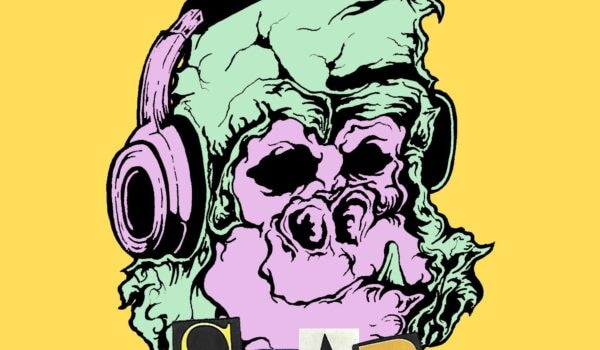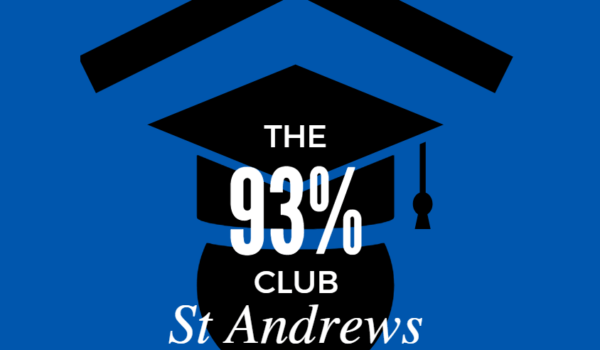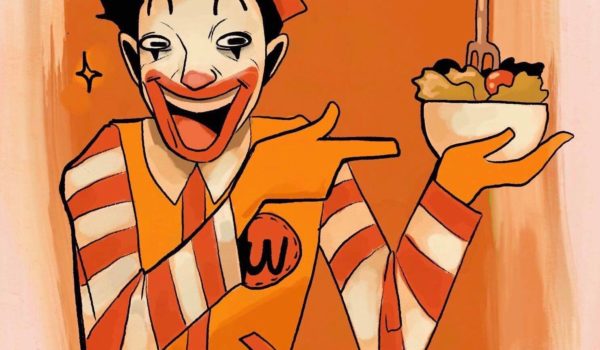Armed with the dual blessings of copious, covid-attributed free time and the prospect of reliably miserable weather, this winter has, in my book, been one less of typical Christmas cheer or holiday shenanigans but rather a retreat into the cosy confines of my bedroom. The task at hand? To religiously consume unhealthy volumes of Japanese cartoons.
Episodes skim past by factors of the dozen, with time not being measured in hours but rather blocks of 20-minute serotonin injections. So, what gives? Indeed, as a member of the general populous, it may seem a struggle to find the appeal of anime catching the occasional glimpse through meme culture or reminiscing over one’s snot-faced youth squatting behind the lunch monitors shed illicitly dealing Pokémon Cards. Perhaps responsible is the avant-garde approach to storytelling, dealing with topics removed from Western social discourse, often being more prone to thematic risk-taking, breaking from established tropes. This allure, however intangible is indeed very present, for, over the past decade, the medium has experienced a surge in popularity globally, increasingly freed from sweaty convention halls and underground DVD market stalls toward a mainstream existence.
So, who shot the magic bullet, what happens to be behind this lurch in the medium’s popularity? In the eyes of a globalist, one could perhaps make a case for it being a product of the wonders of free-market capitalism. Japanese animation studios fully aware of the demographic woes of their home turf have increasingly been marketing and pushing to an oversees audience prompting huge exclusivity deals with the likes of Netflix and Hulu. In this acute marriage of neoliberal innovation, one can observe how the internet has facilitated both the lining of the pockets of Anime creators or mangaka and allowed for the outreach of anime as a medium substituting Japans dwindling industrial might with enhanced soft power. The result? Little Johnny gets the likes of his South Parks and American Dads but tucked in between lies a flavour of exotic spice. Like a Botanist in the 1600s catching a glimpse of a banana amongst a barrel of apples.
Honestly, however, attributing such a trend to mere economic theory is reasonably bland and underselling the phenomena. As a staunch purveyor of anime, I will always stand behind the quality of both the storytelling and art direction in addition to tight thematic exploration as the prime driver behind its increasing cultural relevance in the west. Many Anime cater toward a market ill covered by Western animation with cartoons traditionally resigned to the book-bags of primary school children on their Sunday morning Peppa Pig binges. Instead, we see Japanese animation breaking with the infantile association peddled by advocates of live-action entertainment, filling the void in the availability of high-quality adult orientated cartoons. This untapped market has become ever more evident recently, with various shows riding off the popularity of both social media and adrenaline-centric preferences common among the youth.
The reach of ‘Attack on Titan’ a gripping tale featuring a crescendo of ever-increasing stakes affording comparisons to Game of Thrones, demonstrates this popularity well. Currently airing in its fourth and final season with popularity backing it as the most popular currently airing television show in the States. Upon its weekly release, themes of conflict and betrayal frequent the Twitter trending tab, much to the bemusement of ‘normie’ onlookers. This marrying of social media sensationalism and the favouring of an explicit no-nonsense narrative, with each successive episode a game of Russian roulette, perhaps goes some way in explaining the recent popularity of both Attack on Titan and, more broadly, Anime as a medium.
With active and growing online communities, one can especially see the appeal. Indeed, Western animators are increasingly turning to mature and alternative themes. Names like BoJack Horseman spring to mind, headlining a sprawl of new animated ventures on Netflix. Intriguingly as if to come full circle, the US-based media conglomerate has since commissioned a plethora of exclusive cartoons from Japanese animators frequently debuting in the West before their native Japan. If nothing else, this demonstrates just how proclaimed the medium’s reach is in the year 2021, no longer the plaything of a select group of Forum dwellers and Dungeon masters.









jack On 24/02/2021 at 22:39
Really interesting, with such rich history, no wonder it had adult spinoffs…
Great article tho! 🙂